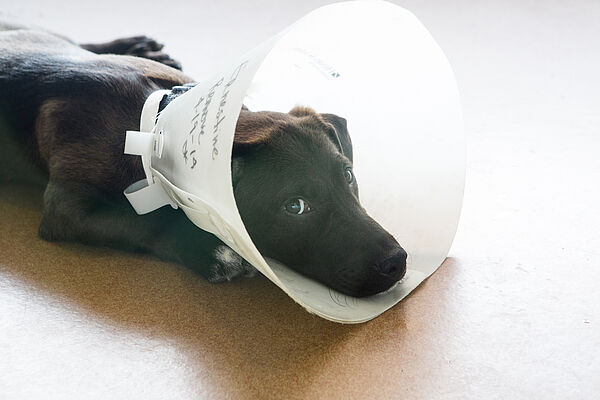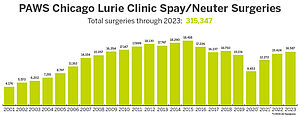Important Factors to Consider when Targeting Spay/Neuter:
- Price: To mobilize people who would otherwise not spay or neuter their pets, it has to be a free service.
- Location: Free and low-cost clinics can best serve populations in need when located in under-resourced, low-income communities where veterinary resources are scarce.
- High Strays: Communities that have the highest number of stray and roaming animals need free and low-cost spay/neuter. Those pets are most likely to breed. And these high-stray communities directly correlate with low-income and under-resourced communities.
- Source of Pets Entering Shelters: Communities that bring the highest number of pets to the city pound helps identify where spay/neuter is needed.
- Lack of Awareness: Outreach and awareness initiatives should be directed to communities where spay/neuter is not widely understood. In most communities, approximately 80% of pets are spayed or neutered. But in low-income, under-resourced communities that percentage is usually less than 20%.
Our Spay/Neuter Strategy
In 2000, PAWS Chicago opened the Lurie Clinic. We did so after looking at citywide geographic data that showed communities with the highest number of stray pets. Located in Little Village, the Lurie Clinic serves Chicago’s high-stray, under-resourced communities, where the majority of stray and unwanted pets originate.
We also offer mobile spay/neuter services through the GusMobile Spay/Neuter Van, which brings life-saving solutions directly to other neighborhoods most in need.
How We Determine Free Spay/Neuter Eligibility
Eligibility is based on two key factors:
- Targeted ZIP Codes: We track which Chicago ZIP codes have the highest number of stray animals, based on number of stray calls. We also track where the animals coming into the city pound are coming from, either because owners are giving them up or Animal Control is picking them up as strays. Using this data, we establish our Targeted ZIP Codes.
- Public Assistance: We want to provide this service for individuals and families who truly cannot afford it.
Our Spay/Neuter Results
Our work is not done. There are still thousands of homeless pets killed annually in Chicago and thousands more in surrounding communities. We will keep going until we build a No Kill Chicago.
- When PAWS Chicago was founded in 1997, 26,394 pets were killed at Chicago Animal Care & Control (CACC), the city impoundment facility.
- Since then, PAWS Chicago has led to the reduction in homeless pet euthanasia in the city of Chicago by 90.2 percent.
- In 2023, PAWS Chicago performed 16,587 spay/neuter surgeries.
Helping Rescue Groups
In addition to the primary mission of reducing pet overpopulation by providing targeted free spay/neuter, we also work to help rescue groups by offering low-cost spay/neuter and medical packages to help them save more homeless pets.


